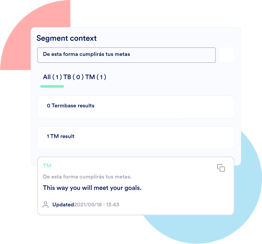The Localization Tech You Need to Scale Cost-Effectively

In today’s digitally-connected world, the key to multinational success is localization. In fact, nearly 90% of companies believe Global Experience (GX) is a priority for them within their target markets. And in order to meet these growing demands, it’s extremely important to be able to build and scale an efficient global experience program.
However, scaling your program into new markets and languages can be a heavy, expensive lift. And with so many new technologies and platforms in the market, it can be hard to identify which localization tools are worth investing your time and capital in.
To help, we’ve compiled a list of three scalable, cost-saving technologies that will successfully ready your global teams and localization campaigns.
Automated QA Checks
Automation is one of the best ways to remove any highly manual, repetitive tasks, such as reviewing and proofreading. As you expand into new markets with multiple languages, automated QA checks can add an extra set of eyes to ensure greater brand consistency and cohesion across your digital touchpoints and content.
By minimizing room for error, these automated batch QA checks make sure that your translations are done right the first time, saving you significant amounts of time and money to correct them. In turn, this will allow your teams to stay focused on more complex, strategic tasks that truly require their precious time, knowledge, and resources.

How it Works
To get started, work with a GX management platform that allows automated batch QA checks in your translation processes. Once they’ve been implemented into your workflow, your linguists and team members can run consistency checks that automatically cross-check translated content with pre-established spelling, grammar, and messaging rules set by your team.
TM Leverage
Take your budget further by supporting your linguists and translators with curated assets, such as translation memories, to support translation. A Translation Memory (TM) is an ever-growing database of previously translated words, sentences, paragraphs, and phrases that a linguist previously translated and confirmed as correct.
TMs are a great way to ensure that your assets are up to date and are being properly utilized by your linguists and translators. The result? You’ll notice an improvement in productivity and the quality of your overall translations and a decrease in the time and cost spent going back and forth between linguists, reviews, and teams.

How it Works
The more stored memories, or TMs, leveraged, the better the machine is able to predict translations, requiring fewer words (and time) translated by a human linguist. As a result, less time is spent editing and changing the same, repetitive mistakes. Over time, a high TM leverage reduces costs spent on projects, allowing you to translate more with less.
Connectors or Integrations
Connectors (or integrations) are a great way to streamline your workflows and to run a continuous localization program. In most cases, you’ll want to look for Connectors that can be integrated with your already existing tools and tech stack, such as Content Management Systems (CMS), Translation Management Systems (TMS), File Sharing platforms, and more.
When used properly, Connectors enable a seamless translation workflow and embed localization into the complete global experience. They’re a great way to rethink your go-to-market content and development strategies by placing localization at the beginning of these processes. Across your website, product descriptions, emails, and more, Connectors allow you to meet fast-approaching deadlines and eliminate redundant tasks, such as downloading and uploading translated content, out of the process.
How it Works
With a few clicks of a button, you can request, review, and publish your localized content directly within your existing systems. Wherever your content lives, skip the manual exports and imports, and send it directly to your GX management system for translation. It’s easier, faster, and eases the burden of onboarding new vendors and platforms.
As you can see, translation technologies are vital to maximizing localization ROI and scaling affordability. And since GX requires collaboration between developers, translators, marketers, designers, and more, clunky workflows and inefficient localization tools are very real pain points and can dry out your resources before you see results.
-%20Light%20Blue%20(1).png?width=610&name=Lilt%20(728x90)-%20Light%20Blue%20(1).png)


